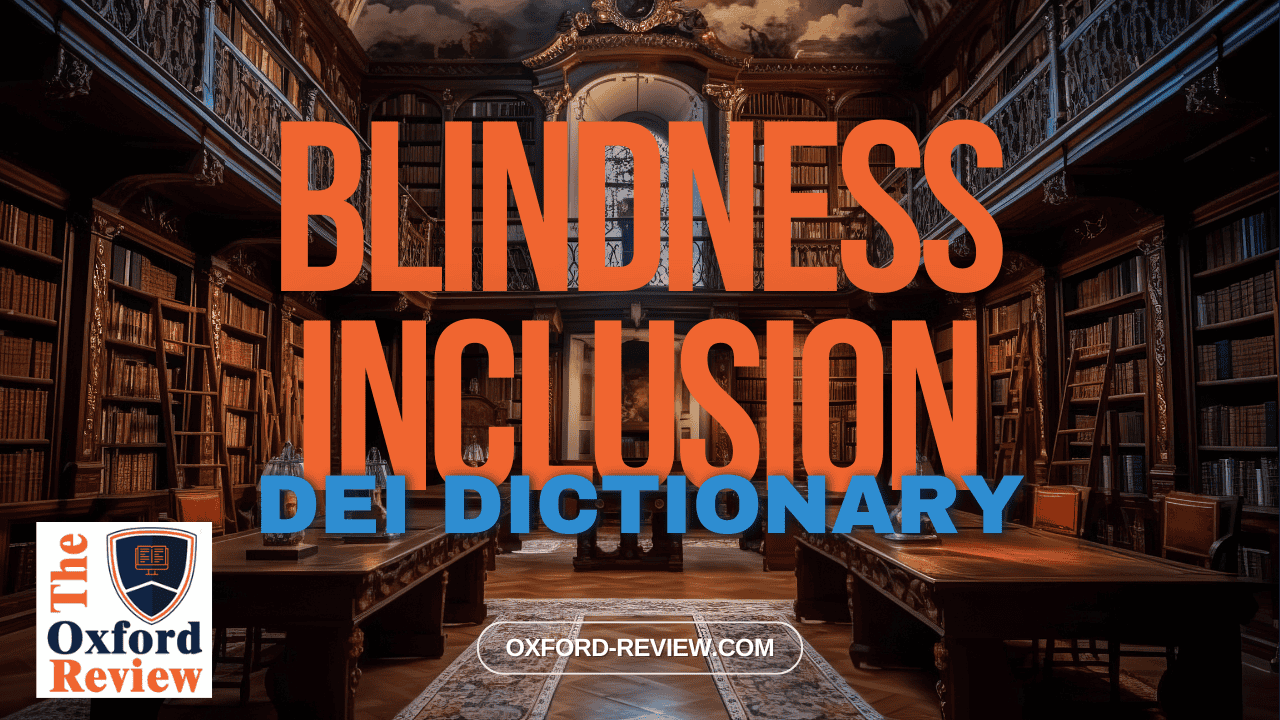Blindness Inclusion – Definition and Explanation

Blindness Inclusion: Fostering Diversity and Equity through Comprehensive Understanding
In the realm of Diversity, Equity, and Inclusion (DEI), Blindness Inclusion stands as a pivotal concept, aiming to create environments where individuals with visual impairments are fully integrated and valued. This inclusive approach goes beyond mere accommodation; it strives for comprehensive accessibility, understanding, and appreciation of individuals regardless of their visual abilities.
Understanding Blindness Inclusion:
Blindness Inclusion embodies the principle of recognising and embracing the unique experiences, perspectives, and contributions of individuals who are blind or visually impaired. It calls for dismantling barriers, both physical and attitudinal, that hinder their full participation in various aspects of life, including education, employment, social interactions, and public spaces.
This approach emphasises proactive measures to ensure accessibility in all facets of society, ranging from infrastructure and technology to policies and attitudes. It advocates for the use of inclusive design principles, such as accessible formats, tactile markers, and auditory cues, to facilitate equal access and participation.
Strategies for Blindness Inclusion:
Achieving Blindness Inclusion requires a multifaceted approach that addresses both systemic and individual barriers. Key strategies include:
- Accessible Environments: Designing physical spaces, digital platforms, and communication materials with accessibility features such as braille signage, screen readers, and alternative text for images.
- Education and Awareness: Promoting awareness and understanding of visual impairments to foster empathy, dispel misconceptions, and promote inclusive attitudes among the broader community.
- Employment Opportunities: Creating inclusive workplaces by implementing accessible recruitment processes, providing reasonable accommodations, and offering training on inclusive practices.
- Collaboration and Advocacy: Partnering with disability rights organisations, advocacy groups, and individuals with visual impairments to advocate for policy changes, accessibility standards, and inclusive practices.
- Empowerment and Representation: Empowering individuals with visual impairments to actively participate in decision-making processes, representation in media, and leadership roles.
Example:
In the United Kingdom, the Royal National Institute of Blind People (RNIB) has been a pioneering force in promoting Blindness Inclusion across various sectors. One notable initiative by RNIB is the “See Differently Awards,” an annual event that celebrates businesses, organisations, and individuals who have made significant contributions to creating inclusive environments for people with sight loss.
One exemplary case is the partnership between RNIB and a leading retail chain to implement accessibility features in their stores, including tactile maps, audio guides, and staff training on assisting customers with visual impairments. This collaboration not only enhanced the shopping experience for individuals with sight loss but also set a precedent for other businesses to follow suit, thereby advancing Blindness Inclusion on a broader scale.
Conclusion:
Blindness Inclusion is not merely about compliance; it’s about embracing diversity, fostering equity, and cultivating a culture of belonging where everyone, regardless of their visual abilities, can thrive and contribute meaningfully. By embracing this inclusive approach, organisations, communities, and societies can create a more equitable and vibrant future for all. Let us strive together to build a world where Blindness Inclusion is not just a goal but a reality.
References:
Orsini‐Jones, M. A. R. I. N. A. (2009). Measures for inclusion: Coping with the challenge of visual impairment and blindness in university undergraduate level language learning. Support for Learning, 24(1), 27-34. https://nasenjournals.onlinelibrary.wiley.com/doi/abs/10.1111/j.1467-9604.2009.01394.x
Krottje, I. (2019). The blindness of those who see: A Case Study on the Perceived Mobility and Inclusion of Blind and Partially Sighted People (Doctoral dissertation). https://frw.studenttheses.ub.rug.nl/3216/
de Verdier, K., & Ek, U. (2014). A longitudinal study of reading development, academic achievement, and support in Swedish inclusive education for students with blindness or severe visual impairment. Journal of Visual Impairment & Blindness, 108(6), 461-472. https://journals.sagepub.com/doi/abs/10.1177/0145482X1410800603
Be impressively well informed

Get the very latest research intelligence briefings, video research briefings, infographics and more sent direct to you as they are published
Be the most impressively well-informed and up-to-date person around...
